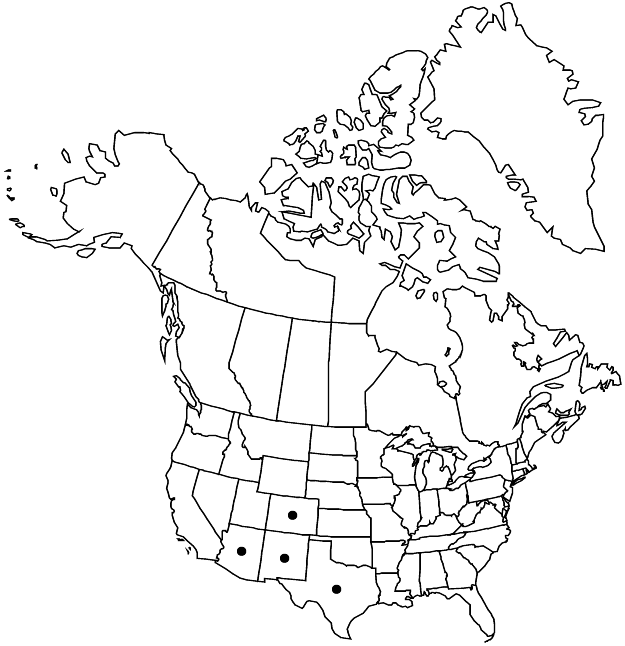Difference between revisions of "Drymaria leptophylla var. leptophylla"
FNA>Volume Importer |
FNA>Volume Importer |
||
| Line 1: | Line 1: | ||
{{Treatment/ID | {{Treatment/ID | ||
|accepted_name=Drymaria leptophylla var. leptophylla | |accepted_name=Drymaria leptophylla var. leptophylla | ||
| − | |accepted_authority= | + | |accepted_authority= |
|publications= | |publications= | ||
|basionyms= | |basionyms= | ||
| Line 7: | Line 7: | ||
|name=Drymaria tenella | |name=Drymaria tenella | ||
|authority=A. Gray | |authority=A. Gray | ||
| + | |rank=species | ||
}} | }} | ||
|hierarchy=Caryophyllaceae;Caryophyllaceae subfam. Polycarpoideae;Drymaria;Drymaria leptophylla;Drymaria leptophylla var. leptophylla | |hierarchy=Caryophyllaceae;Caryophyllaceae subfam. Polycarpoideae;Drymaria;Drymaria leptophylla;Drymaria leptophylla var. leptophylla | ||
| Line 30: | Line 31: | ||
-->{{#Taxon: | -->{{#Taxon: | ||
name=Drymaria leptophylla var. leptophylla | name=Drymaria leptophylla var. leptophylla | ||
| − | + | |authority= | |
| − | |authority= | ||
|rank=variety | |rank=variety | ||
|parent rank=species | |parent rank=species | ||
| Line 45: | Line 45: | ||
|publication year= | |publication year= | ||
|special status= | |special status= | ||
| − | |source xml=https://jpend@bitbucket.org/aafc-mbb/fna-data-curation.git/src/ | + | |source xml=https://jpend@bitbucket.org/aafc-mbb/fna-data-curation.git/src/f50eec43f223ca0e34566be0b046453a0960e173/coarse_grained_fna_xml/V5/V5_12.xml |
|subfamily=Caryophyllaceae subfam. Polycarpoideae | |subfamily=Caryophyllaceae subfam. Polycarpoideae | ||
|genus=Drymaria | |genus=Drymaria | ||
Revision as of 21:50, 16 December 2019
Plants annual, herbaceous, glabrous, not glaucous. Stems erect, sparingly branched, 8–25 cm. Leaves mostly opposite; stipules ± deciduous, divided into 2 filiform segments, 0.3–1 mm; petiole absent or nearly so; blade linear to narrowly oblong, 0.5–2.5 cm × 0.2–1.2 mm, base attenuate, apex rounded to apiculate. Inflorescences terminal, open, (5–)15–75-flowered cymes. Pedicels shorter to longer than subtending bracts at maturity. Flowers: sepals with 3 prominent veins arcing outward at midsection and confluent apically, lanceolate to ovate (herbaceous portion lanceolate), 1.8–3.5 mm, unequal, with outer 2 often shorter (± 0.5 mm) than inner, apex acute to acuminate (herbaceous portion similar), hood oblique to apex, at least weakly developed on outer 2 sepals, glabrous or sessile-glandular; petals 2-fid for 1/2 or less their length, 1.3–2.6 mm, 1/2–1 times as long as sepals, lobes 1-veined, vein unbranched, linear, trunk absent, base gradually tapered, apex rounded. Seeds tan, snail-shell-shaped, lateral thickenings absent, 0.6–0.7 mm; tubercles minute, rounded. 2n = 36.
Phenology: Flowering late summer–early fall.
Habitat: Rocky or gravelly flats or slopes, disturbed areas in pine or oak woodland
Elevation: 1700-2400 m
Distribution

Ariz., Colo., N.Mex., Tex., Mexico (Baja California, Chihuahua, San Luis Potosí, Sonora).
Discussion
Selected References
None.